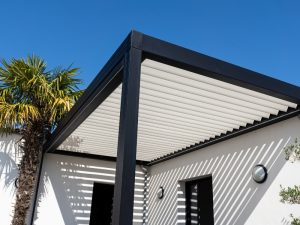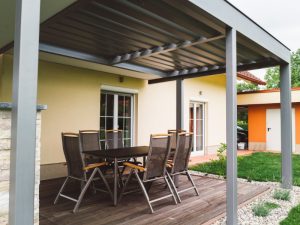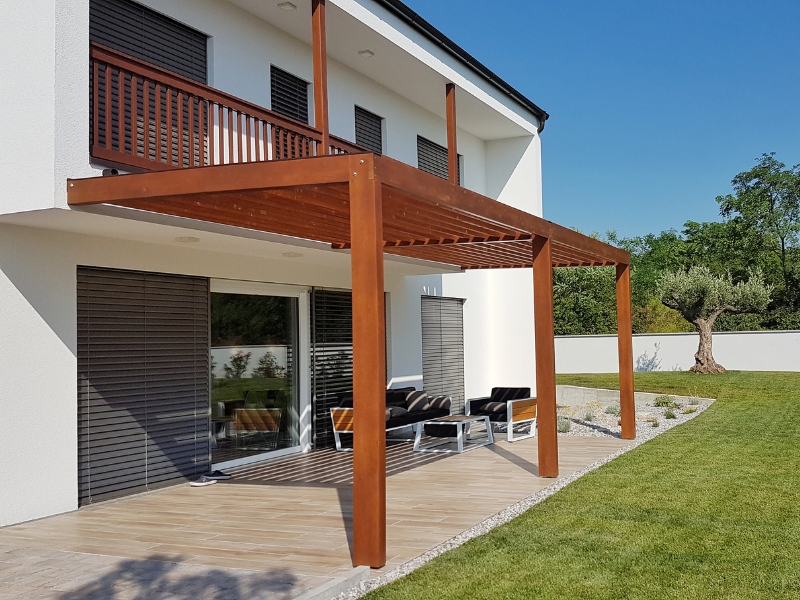Garden pergolas are a popular addition to outdoor spaces, offering a stylish and functional way to enjoy the outdoors. However, like any structure, pergolas can start to sag over time, which may affect their aesthetics and functionality. Understanding why this happens and how to prevent it is essential for homeowners looking to maintain their pergolas in top condition. This article will explore the reasons behind a sagging pergola, how to prevent it, and what steps you can take to fix the issue. If you’re considering installing a pergola or want to ensure your existing structure stays in great shape, this guide is for you!
What causes garden pergolas to sag over time?
Several factors contribute to pergola sagging, with the main causes being environmental conditions, poor construction, and wear and tear.
- Weather and climate: Constant exposure to harsh weather conditions—such as heavy rain, snow, or intense heat—can weaken the structure over time. The wood or metal components may expand and contract, leading to stress that causes the pergola to sag. Considering climate change and building design is crucial. Selecting materials that withstand varying weather conditions is key to long-term durability and minimising sagging risk.
- Weight load: Overloading the pergola with climbing plants, vines, or even heavy lighting fixtures can cause the structure to bear more weight than it was designed for, leading to sagging.
- Poor materials: Low-quality wood or metal can deteriorate faster, compromising the pergola’s structural integrity. For example, untreated wood can warp or rot, causing the posts to shift and sag.
- Improper installation: If the pergola is not installed correctly, with sufficient support and proper anchoring, it may start to sag under its own weight over time.
- Foundation issues: If the pergola’s foundation is not secure or has shifted (due to soil movement or poor placement), the structure may become unstable and sag.
What are the common signs of a sagging pergola?
Identifying the early signs of sagging can help you address the issue before it worsens. Keep an eye out for the following:
- Visible sagging in the roof beams: The most noticeable sign is when the pergola beams begin to droop or dip in the middle.
- Warping of wooden posts: If the posts are wooden, they may warp, bend, or even crack, affecting the pergola’s overall stability.
- Uneven roofline: The pergola’s roof may start to look bumpy, with one side being lower than the other.
- Cracks or splits in the material: Cracks or splits in the wood, metal, or other materials used in your pergola may signal structural damage that could lead to sagging.
- Loosened joints: If you notice that screws, bolts, or other fasteners are coming loose, this can result in shifting parts and ultimately cause sagging.
How can you fix a sagging pergola?
If your pergola has started to sag, don’t worry—there are several ways to fix it, depending on the severity of the issue. Here’s what you can do:
| Issue | Solution |
| Sagging beams | Add reinforcements or replace parts. |
| Warped posts | Replace the damaged posts. |
| Loose fasteners | Tighten screws and bolts. |
| Shifting foundation | Level and secure the foundation. |
Choosing the best materials for enclosed pergolas will ensure long-lasting protection and aesthetic appeal when building a pergola.
Should you choose a wall-mounted pergola to avoid sagging issues?
Wall-mounted pergolas can be an excellent option for avoiding sagging problems. Here’s why:
- Stability: Since wall-mounted pergolas are anchored directly to the wall, they receive additional support from the building structure. This reduces the load on the pergola posts and prevents sagging.
- Less weight load: With wall-mounted pergolas, there’s often less weight to bear since the support is shared with the wall, reducing the strain on the posts and beams.
- Customisable design: Wall-mounted pergolas allow you to design the space to minimise the risk of sagging. By distributing weight and ensuring the pergola is properly aligned, you can prevent future issues.
- Aesthetic appeal: Wall-mounted pergolas provide a modern and sleek look that can enhance the visual appeal of your outdoor space without compromising durability.
How can you prevent your pergola from sagging in the future?
Taking proactive steps can significantly reduce the risk of your pergola sagging. Here are some key tips to help you maintain a stable structure:

- Use quality materials: Invest in high-quality materials when building your pergola. If you’re considering a durable roofing option for your pergola, understanding the lifespan of a metal roof can help you make an informed decision about long-term maintenance and protection.
- Regular maintenance: Periodically inspect your pergola for signs of wear, such as loose screws, rusted bolts, or rotting wood. Tighten bolts and replace damaged components promptly.
- Limit weight load: Avoid overcrowding your pergola with heavy items. While climbing plants add charm, ensure they are not too dense and regularly trim them to reduce their weight structure.
- Reinforce supports: Install extra beams or crossbars to distribute weight evenly and add extra support. This is particularly helpful for larger pergolas.
- Proper installation: Ensure professionals install your pergola or follow DIY instructions carefully, paying attention to the foundation, anchoring, and alignment.
How can you ensure your pergola installation is done correctly to prevent sagging?
Proper installation is crucial to preventing sagging over time. Here are a few tips to ensure your pergola is installed correctly:
- Choose a level and secure foundation: The foundation is the key to a stable pergola. Ensure it’s level and properly anchored, whether it’s a concrete slab, pavers, or posts in the ground. Additionally, securing pergola posts properly with high-quality anchors and fasteners is essential for a sturdy and reliable structure.
- Follow manufacturer guidelines: Whether you choose a DIY pergola kit or hire a professional, follow installation guidelines carefully to avoid structural issues.
- Use quality fasteners and supports: Don’t cut corners when it comes to materials. High-quality fasteners, brackets, and supports will keep your pergola secure and prevent sagging.
- Hire professionals when necessary: If you’re not confident installing the pergola yourself, consider hiring professionals to install a wall-mounted pergola, ensuring a secure and durable addition to your outdoor space. A well-installed pergola will last longer and perform better.

Upgrade your outdoors with durable pergolas
If you’re ready to enhance your outdoor living area with a new pergola, consider the stability and elegance of a wall-mounted pergola from Unique Pergolas. Our range of DIY pergola kits, including manual and motorised louvered options, allows you to create the perfect outdoor oasis while avoiding the common issue of sagging. Whether you’re a DIY enthusiast or prefer professional installation, we’re here to help.
One happy customer shared their satisfaction with the product and service, recommending us highly to those seeking a reliable and beautiful outdoor structure. Get in touch with Unique Pergolas to get started!


